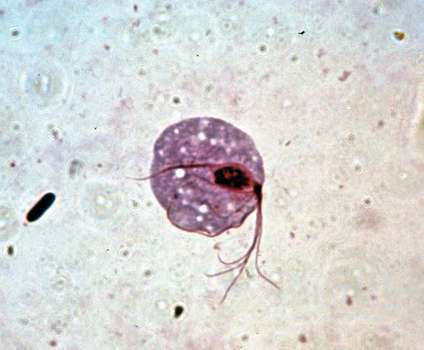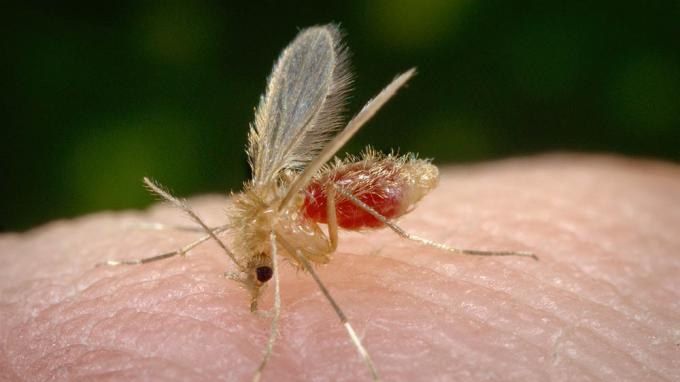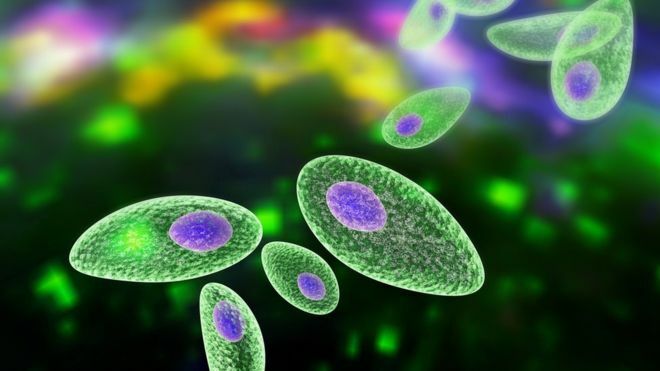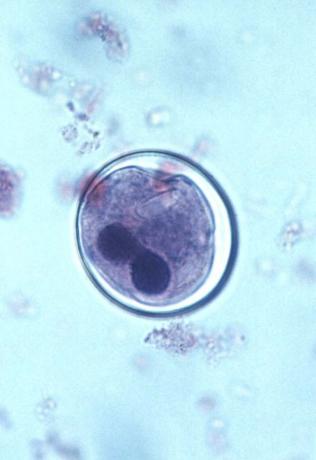single-celled animals of the Protist Kingdom, you protozoa were one of the first living beings on Earth – hence the name, which combines proto (Latin for 'primitive') and zoon ('animal'). Most of them are aquatic and free-living.
Its reproduction occurs mainly asexually, but there are also species that reproduce sexually. For the most part, they do not cause disease.
Even though there are more than 60,000 species in the Protista Kingdom, only a few species infect man. Get to know these parasites and the eight main diseases caused by protozoa:
Index
- 1. Malaria
- 2. Amebiasis
- 3. Chagas disease
- 4. Trichomoniasis
- 5. leishmaniasis
- 6. Giardiasis
- 7. toxoplasmosis
- 8. balantidiosis
1. Malaria

The most famous on the list, malaria is one of humanity's oldest diseases. Present in more than 90 countries, it is transmitted by mosquito bites Anopheles.
In humans, malaria is caused by species Plasmodium vivax, P. falciparum, P. malariae and P. The valley. Of these, the one responsible for the most serious form of the disease is falciparum.
The first symptom of malaria is high fever, accompanied by malaise, nausea, headache and joint pain and yellowish skin. If the patient is not treated or is affected by a more severe form of the disease, he may have renal, pulmonary and cerebral coma complications, and eventually die.
2. Amebiasis

caused by protozoa Entamoeba Histolytica and Entamoeba coli, amoebiasis is also transmitted through cysts, which contaminate water and food and colonize the large intestine.
Complications depend on the stage of the disease. First, there are mucosal and bloody bowel movements and dehydration. Afterwards, the amoebas can reach organs such as the liver, lungs and brain. Only in severe cases can it lead to death.
3. Chagas disease

Transmitted by barbers, who deposit their feces and urine in human skin tissues or mucous membranes after biting, Chagas disease is caused by the protozoan Trypanosoma cruzi. It reaches about 16 to 18 million in Latin America.
Chagas disease has two phases: acute and initial, which is asymptomatic or with few symptoms; and symptomatic, which causes fever, conjunctivitis, myocarditis, among others;
After a latency period of 15 years, the disease can develop into a cardiac, digestive or mixed form, in which the cardiac and digestive forms occur simultaneously. In them, the parasite reaches the organs of these systems and causes more serious consequences.
4. Trichomoniasis
- Free Online Inclusive Education Course
- Free Online Toy Library and Learning Course
- Free Online Math Games Course in Early Childhood Education
- Free Online Pedagogical Cultural Workshops Course

Sexually transmitted disease (STD), trichomoniasis is caused by Trichomonas vaginalis. It is the most common non-viral STD in the world.
In women, it causes vaginitis, pain when urinating and during sexual intercourse, and discomfort in the external genitals. In men, it usually does not cause symptoms, but presents as urethritis with a milky or purulent flow and itching in the urethra.
5. leishmaniasis

Leishmaniasis is a disease caused by different species of the genus protozoan Leishmania. Therefore, there are different manifestations of zoonosis, a term used to define infectious diseases spread among animals. Symptoms and forms of transmission vary.
The potentially deadly leishmaniasis is visceral, which is transmitted by the mosquito L. longipalpis or by contact with infected dogs. There are also cutaneous forms, the integumentary ones, which have almost no gravity but can cause mutilations of the lips, nose and ears.
6. Giardiasis

caused by the protozoan Giardia lamblia, giardiasis is an infection of the small intestine transmitted through the cysts eliminated by the feces of the infected person, which contaminate water, food or household items.
It is a more common disease in children and in places with poor sanitation. It causes nausea, flatulence, abdominal pain, bulky stools and diarrhea. It is treated with medication.
7. toxoplasmosis

Toxoplasmosis is transmitted by the Toxoplasma gondii, a sporozoan. It is transmitted through contact with feces from infected animals, such as cats and rodents, or by eating meat from contaminated animals, such as pigs.
In adults, the parasite causes an asymptomatic chronic infection, which can generate a serious fever and increase the lymph nodes, glands of the immune system. In children, it can cause encephalopathy (alters the function and structure of the brain) and inflammation of the retina and choroid (chorioretinitis).
8. balantidiosis

Infection in the digestive tract, balantidiosis is caused by Balantidium coli. It is transmitted through the consumption of contaminated water and food or if you have contact with pigs or the pigs' rearing environment.
It could be an asymptomatic disease. When manifested, symptoms are fever, diarrhea, nausea, vomiting, weakness, among others.
The password has been sent to your email.

